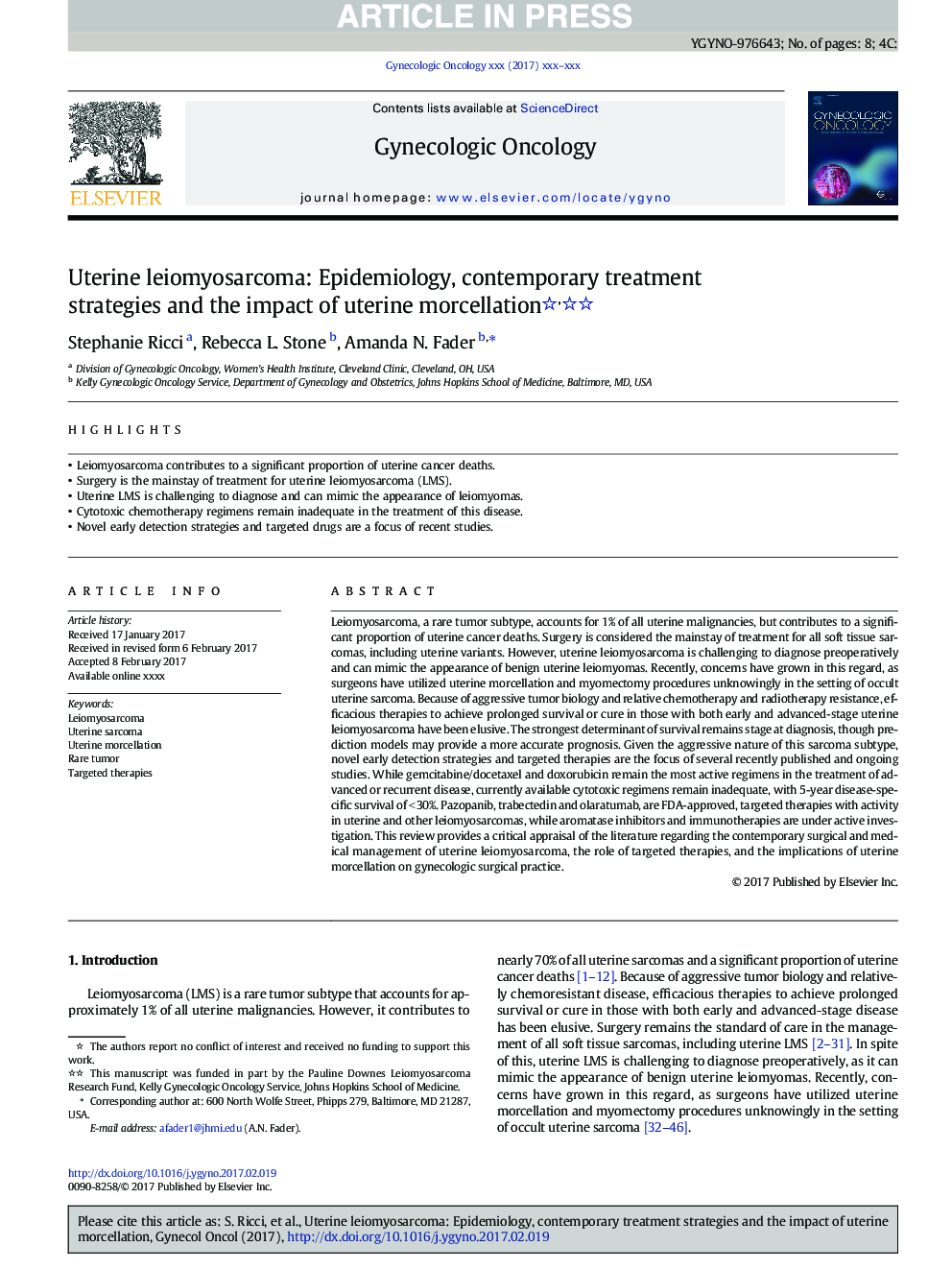| Article ID | Journal | Published Year | Pages | File Type |
|---|---|---|---|---|
| 5695481 | Gynecologic Oncology | 2017 | 8 Pages |
Abstract
Leiomyosarcoma, a rare tumor subtype, accounts for 1% of all uterine malignancies, but contributes to a significant proportion of uterine cancer deaths. Surgery is considered the mainstay of treatment for all soft tissue sarcomas, including uterine variants. However, uterine leiomyosarcoma is challenging to diagnose preoperatively and can mimic the appearance of benign uterine leiomyomas. Recently, concerns have grown in this regard, as surgeons have utilized uterine morcellation and myomectomy procedures unknowingly in the setting of occult uterine sarcoma. Because of aggressive tumor biology and relative chemotherapy and radiotherapy resistance, efficacious therapies to achieve prolonged survival or cure in those with both early and advanced-stage uterine leiomyosarcoma have been elusive. The strongest determinant of survival remains stage at diagnosis, though prediction models may provide a more accurate prognosis. Given the aggressive nature of this sarcoma subtype, novel early detection strategies and targeted therapies are the focus of several recently published and ongoing studies. While gemcitabine/docetaxel and doxorubicin remain the most active regimens in the treatment of advanced or recurrent disease, currently available cytotoxic regimens remain inadequate, with 5-year disease-specific survival of <Â 30%. Pazopanib, trabectedin and olaratumab, are FDA-approved, targeted therapies with activity in uterine and other leiomyosarcomas, while aromatase inhibitors and immunotherapies are under active investigation. This review provides a critical appraisal of the literature regarding the contemporary surgical and medical management of uterine leiomyosarcoma, the role of targeted therapies, and the implications of uterine morcellation on gynecologic surgical practice.
Related Topics
Health Sciences
Medicine and Dentistry
Obstetrics, Gynecology and Women's Health
Authors
Stephanie Ricci, Rebecca L. Stone, Amanda N. Fader,
